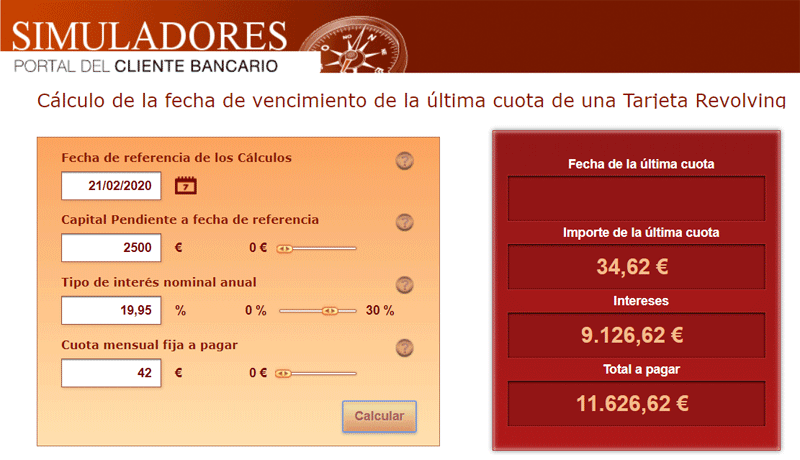What is revolving credit and how is it repaid? Questions, answers...and more
21/02/2020
One of the products most offered by banks are the so-called “revolving” credit cards. Below, we explain their features and provide calculators for specific cases. Sometimes, the payment method involved can lead consumers to become permanently indebted, as we explain below.
Here, we try to answer any questions you may have and give you access to useful tools and advice to help clarify your doubts:
1. What are they?
“Revolving” credit cards offer a specified credit limit and you can defer repayment of your debt in the form of periodic instalments. These may be either a percentage of the outstanding balance or a fixed amount. You can normally change the repayment amount, within minimum limits set by the bank.
2. How do they differ from traditional credit cards?
Their distinguishing feature is that the debt resulting from the credit is “rolled over” each month. Therefore, although the debt decreases with each repayment, generating new available credit, it also increases every time you use the card (payments, ATM withdrawals, etc.) and as a result of the interest, fees and other charges accrued, which are added to the amount you owe.
You can identify a “revolving” credit card by looking at the payment method stipulated in the agreement.
For more information, this vídeo clearly explains the types of cards and the differences between them.
3. What area the financial consequences of this specific feature?
One of the most attractive features of these cards is that you can supposedly pay off your debt in very low monthly amounts, aligned to your needs. But, bear in mind that a low monthly payment may not even cover the interest, which is added to the amount financed. In the end, there is a snowball effect and, even if you make the repayments, the amount you owe continues to grow and you risk becoming tied to a debt that you may never finish paying off. Therefore, it is very important that the repayments are correctly calculated to prevent the debt from growing so much that it can never be paid back using this method.
If you use this type of card and would like to analyse your particular case, this calculator shows you, in simple terms, when you will finish repaying the debt and how much interest you will have paid based on the agreed monthly instalment. This calculator is also available on the “Banco de España. Calculators” application for iOS and Android devices.
Let's see two examples:
Example revolving card (capital: € 2,500, TIN 19.95%, and fee of € 40).

Example revolving card (capital: € 2,500, TIN: 19.95%, and fee of € 42).

4. If you have any questions, what information must your bank provide you with?
In this banking good practice criterion, we explain in detail what information your bank must provide you with. In addition, see the Complaints Report for a report on an actual complaint related revolving credit.
Before acquiring a credit card, don’t hesitate to ask your bank to explain any aspects that you don’t understand, so that you can decide whether it is the product you are looking for. Check the payment method stipulated in the agreement and make sure that you understand how it works and that it fits your needs. Additionally, your bank should explain how the card repayments are calculated, the obligations you are taking on and the consequences of default.



